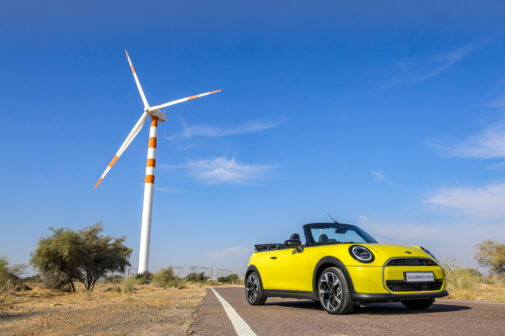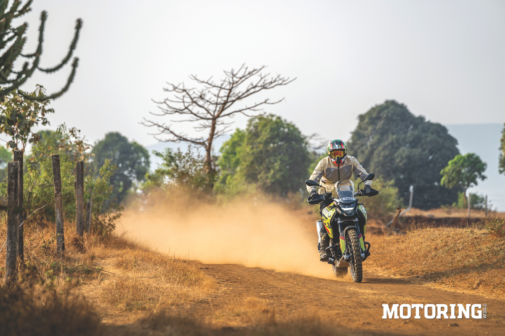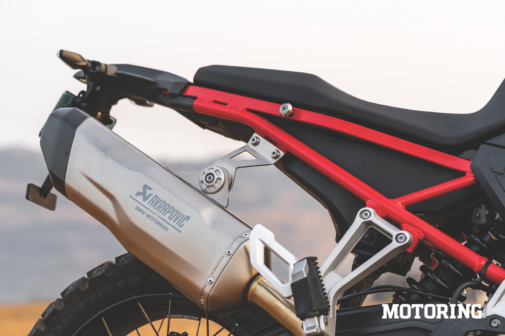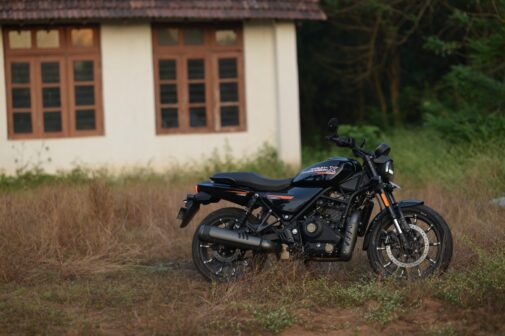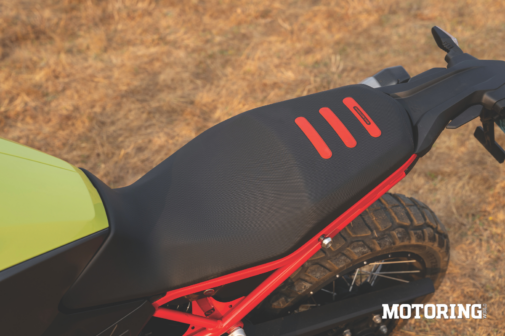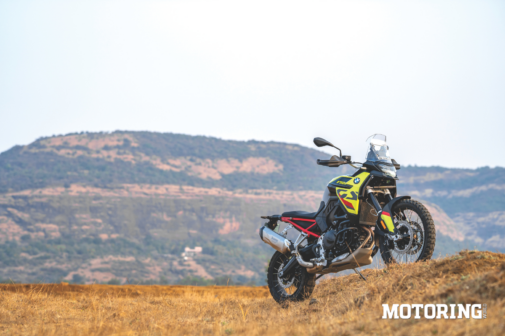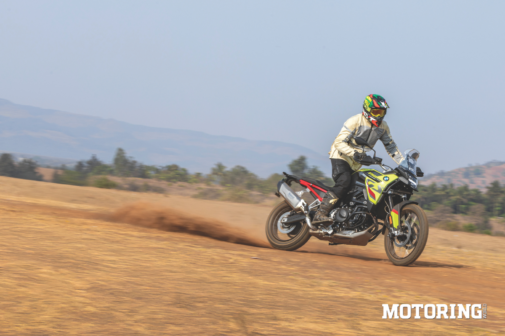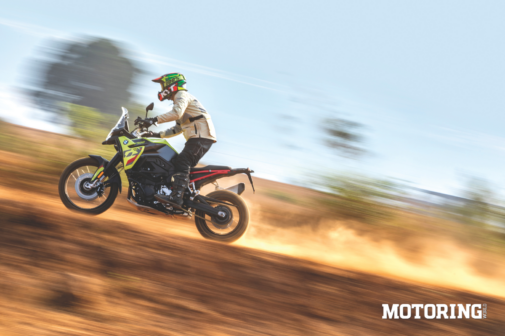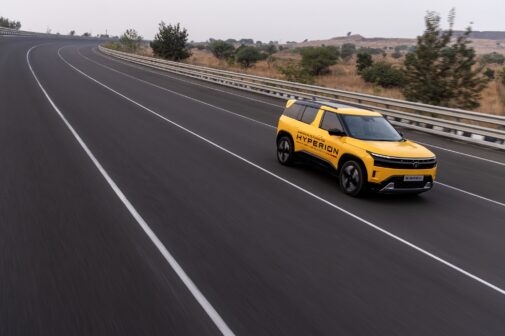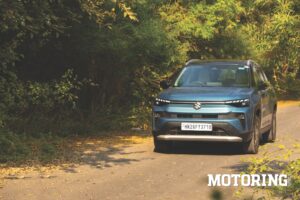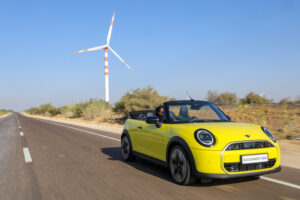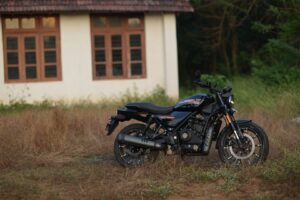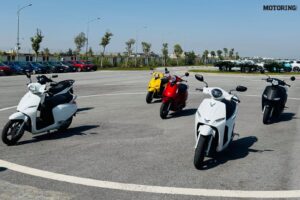Big adventure motorcycles almost always have to strike a balance between two things — touring and off-roading — and in most cases, the former takes precedence. After all, the number of people willing to hustle such heavy bikes through trails is far lesser than who just want a serious-looking versatile machine to munch miles on.
But what if such a motorcycle was built with a completely new approach, with the sole intent of tearing through the wilderness? One that kicks up dirt, devours rough terrain, and scares the living daylights out of everything in its path — all while making you laugh like a madman on a mission? Well, that’s the BMW F 900 GS for you.
I mean, just a glance at the bike and you know it is unlike anything that the Bavarian giant has made. Of the 17 models so far that have worn the ‘F’ badge, this is perhaps the most hardcore purpose-built motorcycle. Of course, the ‘F’ series has had sports tourers, nakeds and ADVs, but none of them were as single-minded as the 900 GS.
This is the first GS to take the maxi-enduro approach. Everything from its exposed red-painted subframe, rally-style flat seat, and the compact tail to the relatively compact fuel tank, and petite face will appeal to every dirt-snorting junkie. Okay, maybe not the face, but more on that later. And the cherry on the cake is the factory-fitted Akrapovic exhaust, which is 1.7 kg lighter than the OEM muffler on the 850 GS.
And weight savings seemed to be at the top of the priority list. The F 900 GS now carries 14.5 litres of fuel in a plastic tank instead of a steel one like the one on the 850 GS. This change alone has saved 4.5 kg. Furthermore, the lack of any panels at the rear and the indicator-integrated tail-light setup shaves off another 2.4 kg. BMW claims that the combined weight savings, courtesy of the new design, has helped in making the F 900 GS 14 kg lighter than the model it replaces.
To make things a bit spicier, BMW has gone from the 853cc parallel-twin mill to a new 895cc unit. With a bigger bore than before, and the same stroke as the 850 GS, the engine produces 103.5 bhp and 9.4 kgm — that’s 10 bhp more than before along with a fuller torque curve, and a brutish character, thanks to the 270-degree crank. It didn’t take long for me to realise that the numbers and details shared by BMW don’t really do full justice to what the experience with the F 900 GS was going to be like.
With the fancy key fob in my pocket, I turned on the motorcycle, and was greeted by a raspy voice of the Akra. Enchanted, I switched to the Enduro Pro mode from Road and the exhaust started sounding even more bewitching; Kaizad was going to have a field day shooting this bike, I thought. And I wasn’t wrong.
The blinking light warned me that the traction control was now disengaged, and a ‘gentle’ flick of the right wrist sent stones flying in the air. As the Karoo rubber began ploughing the terrain, all I had to do was to hold on to the bike as we gracefully went slideways. And keeping the bike in my control was a lot easier than I had imagined.
This engine felt like a caged animal waiting to be set loose, and with the Enduro Pro mode, I did exactly that. The bike surged ahead with an urgency that I don’t recall having experienced on the 850 GS. And it came so naturally to the 900 that unless I looked at the speedo, I didn’t realise I was clocking speeds I shouldn’t be. But then, with the Akra exhaust playing the devil’s advocate, I had to go even faster to see what it sounded like at redline.
All that confidence to do the stupid stuff came from the chassis. Being lighter than the previous bike while handling more power required it to have a great chassis and BMW has ensured that. For starters, the rider’s triangle was just right to give me enough control over the front and because it was narrow between my legs, it gave me a sense that I had a leash on the bike. Furthermore, BMW made a few tiny changes to make the ride experience even better. That includes the wide serrated footpegs as a standard fitment, and the ability to adjust the gear and rear brake controls with ease. Even when standing on the footpegs, everything felt just spot on.
But it wouldn’t be half the fun if it wasn’t for the suspension. When riding through the really gnarly stuff, the bike was unfazed. In fact, it felt like it was taunting me to push harder, and obviously I obliged. A few minutes later, I was getting some decent air time. After a couple of jumps, I was pushing my skills, and perhaps my luck even more, and hence decided to stop. Yet, it didn’t feel like I reached the absolute limit of the standard nonadjustable USD fork.
And that’s where the problem was — adjustability. Maybe not on the dirt tracks that I rode on, but on the tarmac. It was too soft for my liking on the streets of Mumbai. Any deep pothole would result in a big thud, because the compression rate felt a bit too quick. While pushing through corners, it also made the bike feel a bit wishy-washy but that could be also down to the Karoo tyres that were shredding on the road. And in the favour of preserving them for the next journalist, and of course, for me, I saved all the lunacy for the dirt.
But I rode just enough on the tarmac to know that the Dynamic mode ain’t no slouch. While the Road mode still felt a bit sensible, the Dynamic was as manic as the Enduro Pro mode, without switching off the rear ABS or the traction control. But then again, all I needed was to press the TC button on the go to switch it off whenever I wanted, though I refrained from doing so.
The twin two-piston floating calipers clamping on to the 305-mm discs did an exceptional job of shedding speed when things got even slightly out of control. They had great stopping power, and once I got used to the soft suspension and prepared myself for the frontend diving under hard braking, all I had to do was shift my weight, and modulate the lever. As is with most 21-inch wheels, there’s not enough communication to the rider, but the brakes provided ample feedback.
Long slides, big jumps and a grin from start to finish… boy, until now, I had only imagined doing the first two, but the F 900 GS turned that into reality. The ` 13.75 lakh (ex-showroom) price tag had me doing some… actually, a lot of number crunching. After all, BMW Motorrad doesn’t make it easy with the packages and options for the bike. Of course, the bike isn’t perfect, but it doesn’t need to; it comes close. Except for the headlight — they didn’t have to plonk the G 310 GS’s headlight there. But I am not complaining much because the windshield on top of that light was the one thing keeping the helmet from ripping off my head at speeds close to 200 kph.
The F 900 GS is a great example of how manageable big adventure bikes can be, while amping up the lunacy. In all likelihood, most of the 900 GSes will be reduced to glorified cafe runners and tourers. But all you need is some saddle time off the road, and I assure you there’ll be no looking back from there with this bike.









